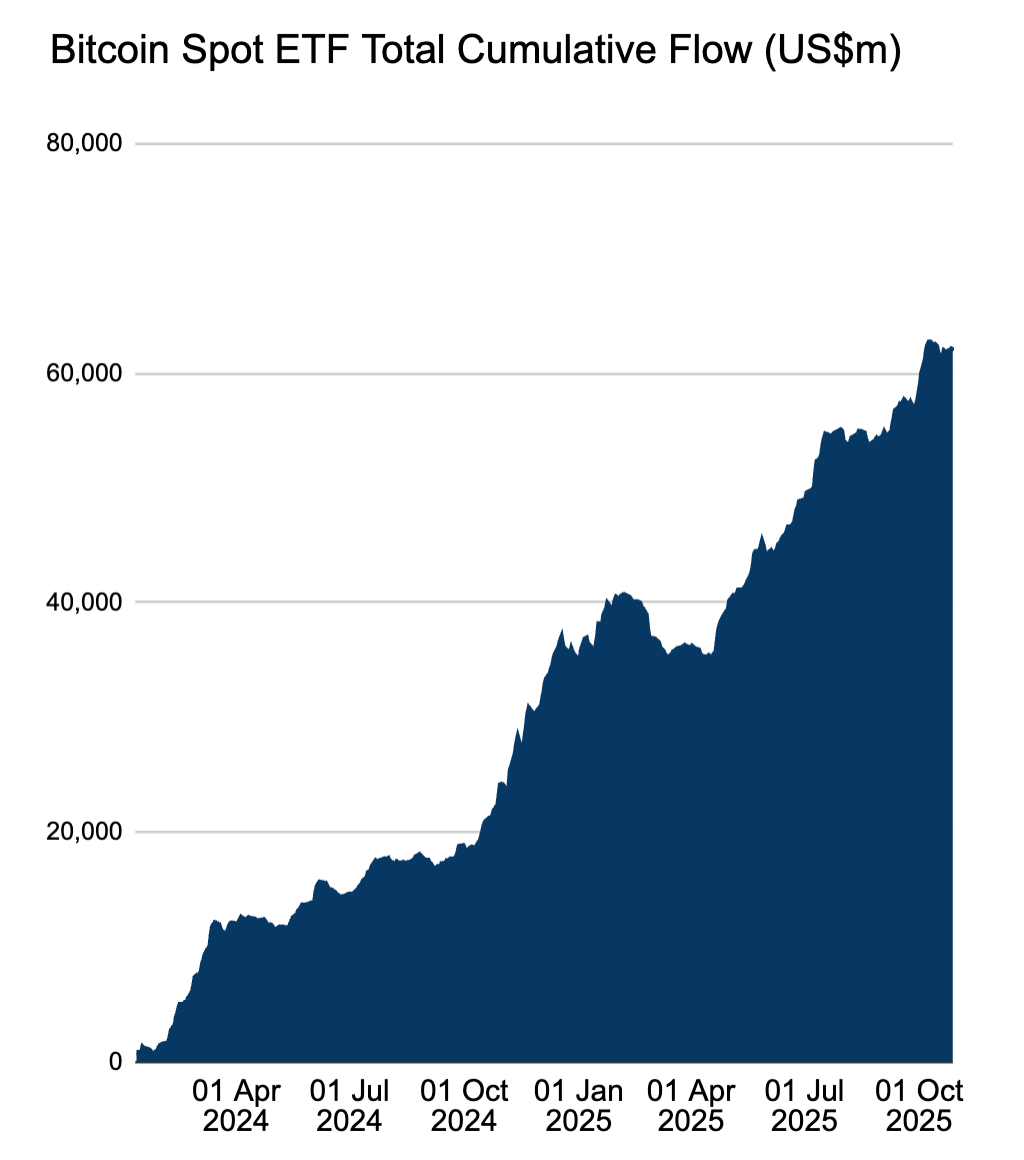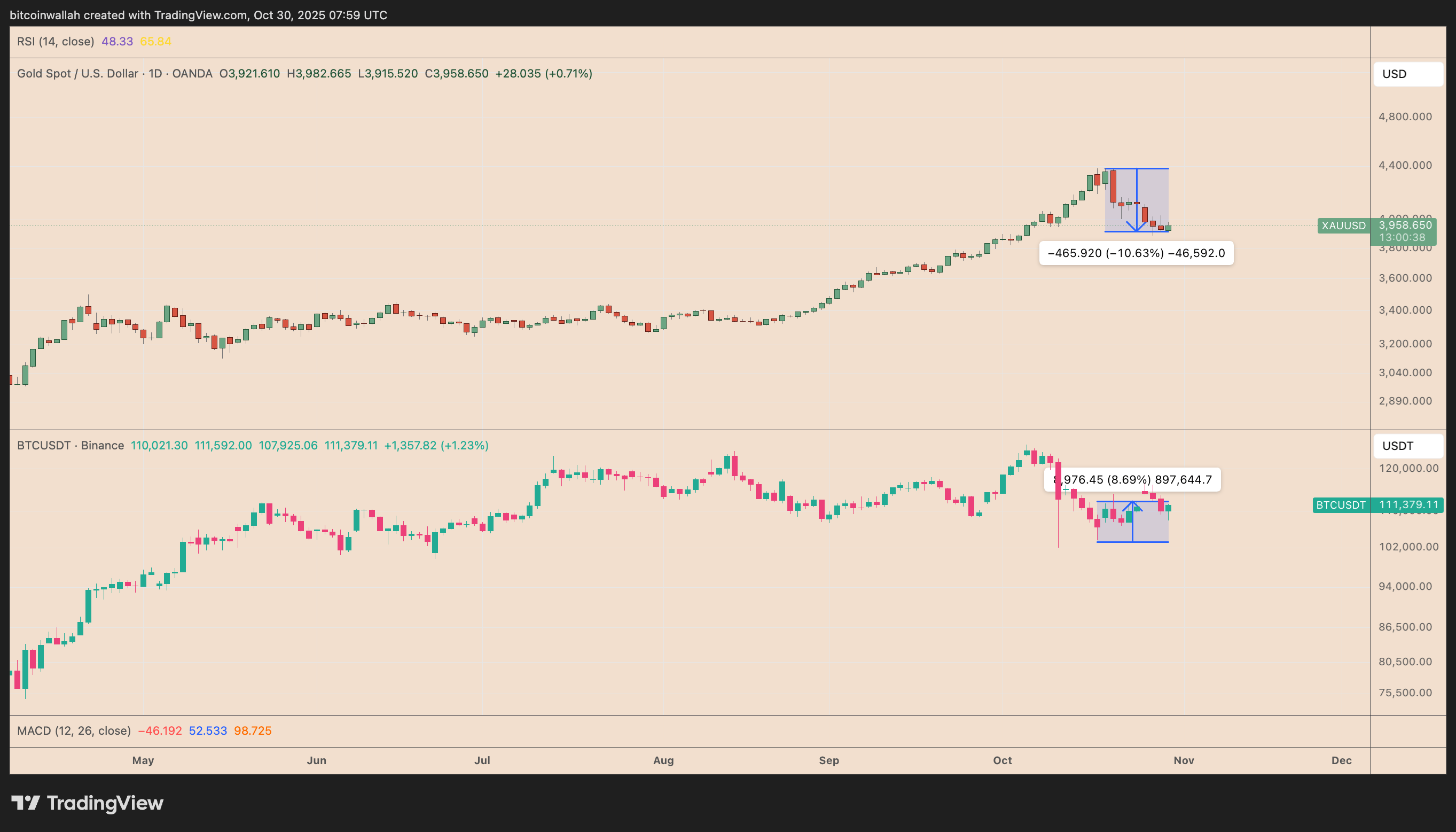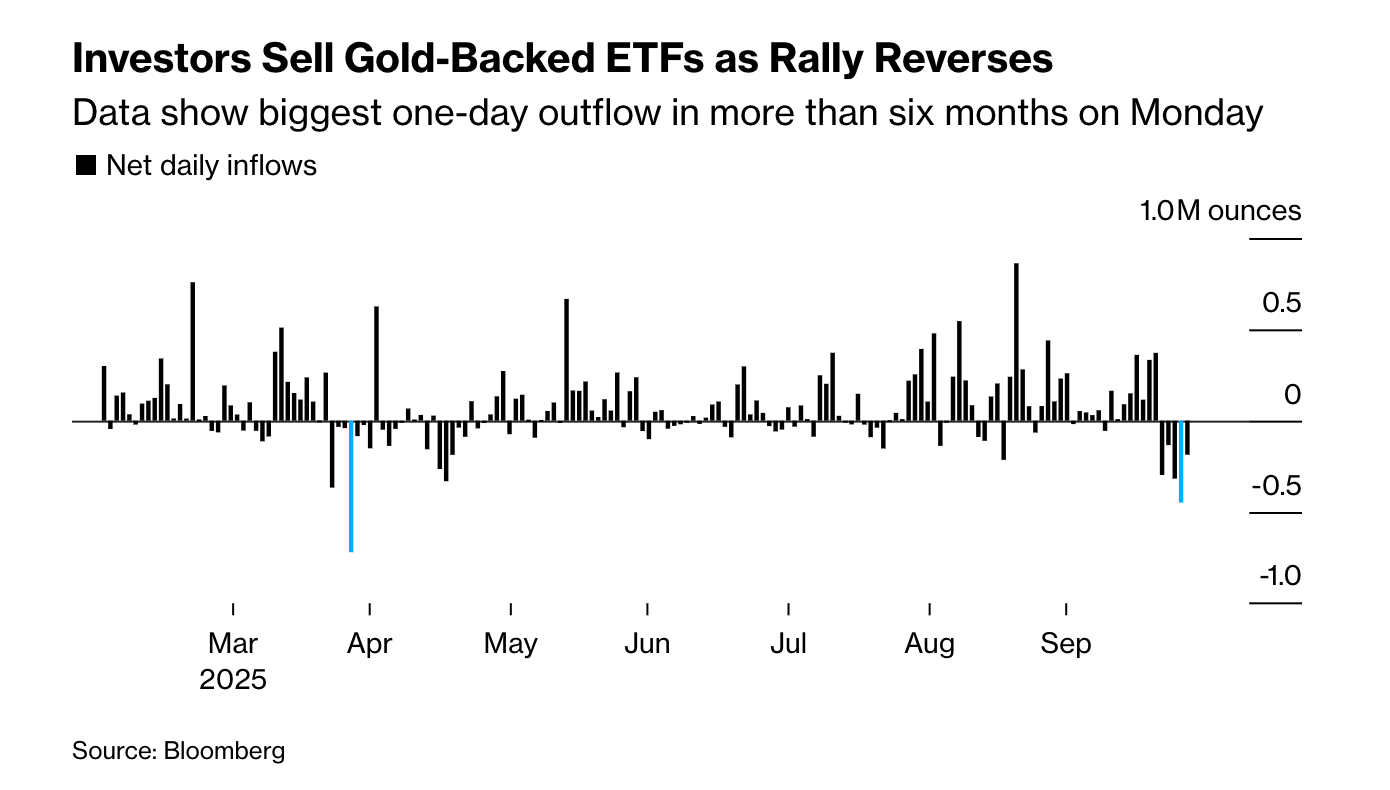
Gold‘s Retreat: A Turning Point for Bitcoin?
The precious metals market has recently witnessed a significant downturn, with gold prices briefly dipping below the $4,000 mark. Simultaneously, Bitcoin has experienced a notable surge, fueling speculation about a potential shift in investor sentiment and asset allocation. This divergence presents a compelling narrative for crypto enthusiasts and financial analysts alike.
ETF Flows: Bitcoin Catches a Bid
A key indicator of this shifting landscape is the performance of Exchange Traded Funds (ETFs) tied to both assets. Since gold hit its record high, Bitcoin ETFs have absorbed an impressive $839 million in net inflows. This influx of capital stands in stark contrast to the outflows experienced by gold-backed ETFs, which saw approximately $4.1 billion leave the market. These figures suggest a strong appetite for Bitcoin among investors, perhaps at the expense of gold‘s traditional safe-haven status.

These figures suggest a strong appetite for Bitcoin among investors, perhaps at the expense of gold‘s traditional safe-haven status.
The Technical Picture: Bitcoin‘s Strength
From a technical analysis perspective, Bitcoin appears to be establishing a robust support level. Analysis points to a strong floor around $101,790. Holding above this support, which aligns with the 20-week exponential moving average (EMA) and the 1.0 Fibonacci retracement level, strengthens the case for Bitcoin‘s potential to reach significant price milestones. Some analysts are already forecasting a year-end target of $150,000, while others, like JPMorgan, predict even greater gains in the coming years.

From a technical analysis perspective, Bitcoin appears to be establishing a robust support level. Analysis points to a strong floor around $101,790. Holding above this support, which aligns with the 20-week exponential moving average (EMA) and the 1.0 Fibonacci retracement level, strengthens the case for Bitcoin‘s potential to reach significant price milestones. Some analysts are already forecasting a year-end target of $150,000, while others, like JPMorgan, predict even greater gains in the coming years.
Gold‘s Correction: A Short-Term Blip or a Deeper Trend?
While gold‘s recent decline is significant, it’s essential to consider whether this represents a temporary correction within a broader bull market. Despite the recent drop, gold remains up year-to-date. Historical patterns suggest that after such steep corrections, gold has often rebounded sharply. However, the current economic climate, with rising interest rates and inflation concerns, could be influencing investor decisions, potentially favoring the perceived scarcity and digital nature of Bitcoin.

However, the current economic climate, with rising interest rates and inflation concerns, could be influencing investor decisions, potentially favoring the perceived scarcity and digital nature of Bitcoin.
Macroeconomic Factors and Market Dynamics
The ongoing trade dynamics between the US and China also play a role. Donald Trump’s remarks regarding a trade agreement and reduced tariffs on fentanyl have improved risk appetite, which has, in turn, fueled a surge in the crypto market. This confluence of macroeconomic factors appears to be driving investors towards riskier assets like Bitcoin, at the expense of traditional safe havens such as gold.
Looking Ahead: Bitcoin‘s Potential
As the market continues to evolve, the interplay between Bitcoin and gold will be an interesting dynamic to watch. The current divergence, driven by ETF flows and technical indicators, points towards a potential shift in investor preference. If Bitcoin maintains its upward trajectory while gold continues to consolidate, we might be witnessing a significant moment in the evolution of digital assets as a store of value. However, the market is inherently volatile, and investors should conduct thorough research and consider the inherent risks before making investment decisions.


